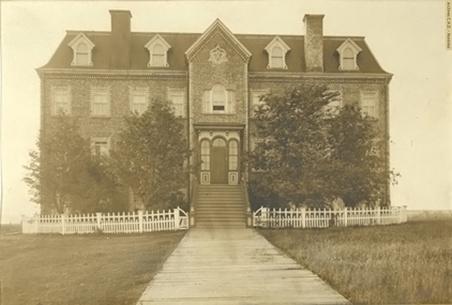
4 minute read
The girls of Saint Mary’s
Schoolmates reconnect while living at Andrews of Stratford
American author Thomas Wolfe once wrote “ you can’t go home again,” and while that may be true in spirit, four Andrews residents have come pretty close
Souris, P E I natives Camilla MacPhee, Jane Pierce, Anne Kells and Jeanette Pirkey recently reconnected after decades living apart
The women, who all attended the Saint Mary Convent in Souris as students in the 1950s, now live down the hall from one another at Andrews of Stratford
RECONNECTING
The four have Stratford activity director Sharon Woods-Bryenton to thank for initiating their reunion
“We always introduce new residents at activities and you know Island connections are made very fast,” she said “Once we hear someone is from Souris or another Island community, we make sure they connect, or in this case reconnect, quickly ”
“I’m the only one that got old,” Jane said, laughing.
She added after 40 years of living in Boston, being able to sit across from a familiar face and chat about old times has been a positive experience.
“It was a big adjustment coming back. It’s good getting reacquainted with people you knew.”
Jeanette, who also moved to the U.S. to work after graduating, agreed.
“I love to see people that I used to know,” she said
Continued From Page 5
Whenever the four get together, the conversation tends toward memories of their hometown, about how Jane used to walk by Jeanette’s house every day on her way to school or about town characters they all knew But the topic they devote the most energy to is the old convent
The School
The convent, founded in 1881, served as one of the primary schools in the community until the construction of the Souris Regional High School in 1955.

“It was the only option we had,” said Anne.
“The boys went to Grade 1 until they made their first communion, then off to the public school they went,” said Jane.
Life at the convent was typical of Catholic-run schools at that time. The hierarchy was rigid by today’s standards and the style of teaching was certainly more stick than carrot.
Once, Anne accidentally knocked over an inkwell. As punishment, she was marched down to the mother superior’s office and made to kneel before her and kiss the floor.
But the women agree these incidents were rare, at least in their experience. For them, the convent was a place of community and fun and the nuns that ran it were trusted mentors.
“I don’t ever remember anybody getting a whack from one of the nuns, ” said Jane. “I just thought they were walking saints.”
“They were wonderful teachers,” said Camilla
Instead, they recall huddling outside to watch the boarders (children from off-Island who lived and studied at the school) arriving, learning piano and who got to be Queen of the May and place the floral crown on the Blessed Virgin statue during the May Crowning ceremony
Parting Ways
By 1956 all four women had graduated and, with the exception of Camilla, moved from Souris Anne went to Montreal and started a nursing career, Jeanette moved to New York and also worked as a nurse while Jane relocated to Boston It would be decades before they would all live in P E I again
Meanwhile, as rural P E I began to grow and new schools were constructed, the student population at the convent shrank By the mid-1960s the school no longer housed borders and by 1968 it closed In 1972 the main building was demolished
“It was one of the worst days of my life,” said Camila “They came with the big ball and chain It was awful ”
Jane said it was a shock visiting home one summer after the school closed and seeing the nuns around town
“They were all in street clothes,” she said “It was another world ”
A Lasting Legacy
While the building is gone, Saint Mary’s has secured its legacy in other ways
All four have remained devout Catholics and, in Jane’s case, still practice convent etiquette
“To this day I still move over to the side of the hallway,” she said. “We were taught you don’t walk in the middle because you may meet somebody. To this day, I’m the same. If I come out of my room and I’m on the other side, I move over. So many things I think of associate me with the convent”
“It’s tradition,” said Anne.


